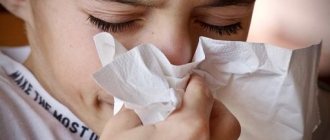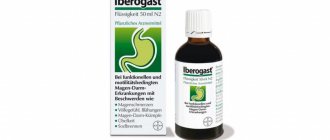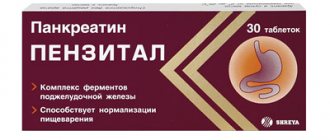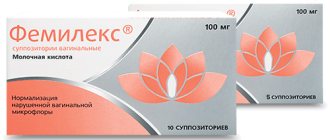Compound
Active ingredients per sachet: paracetamol (acetaminophen) 160 mg, ascorbic acid 50 mg, chlorpheniramine maleate 1 mg. Excipients : citric acid 50 mg, Red charming dye 0.05 mg, raspberry flavor 100 mg, colloidal silicon dioxide (syloid) 4 mg, silicon dioxide 20 mg, sodium citrate dihydrate 2 mg, corn starch 1 mg, powdered sugar 2794, 95 mg, sucrose 8800 mg, titanium dioxide 1 mg, calcium phosphate 1 mg.
general information
Antiflu Kids belongs to the group of combined anti-inflammatory and analgesic drugs. INN – Antiflu Kid's. Used in pediatric and therapeutic practice.
Dosage form, cost, composition
Antiflu is a white powder for preparing a drink taken orally. 1 package may contain 5 or 8 sachets. The price of Antiflu Kids is shown in the table.
| № | Number of sachets per package | average price |
| 1. | 5 sachets | From 206 rubles |
| 2. | 8 sachets | From 229 rubles |
The drug contains 3 active ingredients:
- paracetamol;
- ascorbic acid;
- chlorpheniramine maleate.
After the powder dissolves, the resulting drink turns pink. The drug is made with the addition of raspberry flavor.
Pharmacological features
Due to the content of 3 active components, the medicine has a versatile therapeutic effect:
Analgesic, antipyretic. This effect is exerted by the non-steroidal anti-inflammatory component paracetamol. In parallel, its use achieves a mild anti-inflammatory effect.- Immunostimulating. Ascorbic acid has the ability to strengthen and activate the immune system to fight infections and viruses. Under its influence, the tolerance of paracetamol by the patient's body significantly improves.
- Antiallergic, antihistamine effect. Chlorphenamine - blocks H1-histamine receptors, thereby eliminating lacrimation, sneezing, rhinitis, itching of the eyes and nose.
The interaction of the components of the medication allows you to get rid of fever, runny nose, sore throat, and cephalgia. The medication partially reduces muscle pain and joint aches. There is no information on the pharmacokinetics of the drug in question.
Contraindications
Hypersensitivity to individual components of the drug, severe dysfunction of the liver (Child-Pugh > 9) and kidneys, sucrase/isomaltase deficiency, fructose intolerance, glucose-galactose malabsorption, children under 2 years of age. When combined with monoamine oxidase inhibitors (MAOIs). MAO inhibitors should not be used in combination with antihistamines due to potential side effects on the central nervous system. These effects may prolong and exacerbate the anticholinergic effects of antihistamines.
Carefully
Arterial hypertension, severe cardiovascular diseases, moderate liver and kidney dysfunction, diabetes mellitus, glaucoma, bronchial asthma, chronic obstructive pulmonary disease, thyrotoxicosis, pheochromocytoma, difficulty urinating with prostate adenoma, blood diseases, congenital hyperbilirubinemia (Gilbert, Dubin syndromes) -Johnson and Rother), hyperoxalaturia, glucose-6-phosphate dehydrogenase deficiency, epilepsy, pyloroduodenal obstruction, alcoholism. If you have such conditions, you should consult your doctor before use.
Directions for use and doses
Inside. A single dose for children 2-5 years old is the contents of 1 sachet, for children 6-12 years old - the contents of 2 sachets. Take orally, regardless of food intake, after dissolving in 100-200 ml of warm water (not boiling). If necessary, repeat the dose every 4-6 hours, but no more than 4 sachets per day. If the temperature does not decrease, the pain, chills, and runny nose do not stop, be sure to consult a doctor. The drug should not be taken for more than 3 days without consulting a doctor. Further therapy is possible after consultation with a specialist.
Detailed instructions for taking the medication
The instructions for Antiflu Kids note that the medicine can be taken regardless of food. The course of therapy is usually 5 days. Before taking, the powder contained in 1 sachet should be completely dissolved in 150 ml of boiled warm (not hot) water. The dosing features of the medication are as follows:
- Children 2-5 years old: 1 sachet three times a day.
- Children 6-12 years old: 2 sachets once a day.
Release forms and dosages
The interval between doses should be from 4 to 6 hours. Do not use the drug for more than 5 days. If it is not possible to achieve the expected results from therapy, it is necessary to stop treatment and consult a specialist for further instructions.
Antiflu Kids is not recommended to be taken in parallel with sleeping pills and sedatives. Also, you should not combine this remedy with medications made on the basis of ethanol alcohol. You should avoid taking Antiflu for children together with other medications related to NSAIDs or combined anti-inflammatory/painkillers.
The drug contains sugar as an excipient. Less commonly reported is the development of hypersensitivity reactions in patients. They were manifested by a rash, skin itching, angioedema, and urticaria. If such deviations occur, therapy must be discontinued.
Such conditions, as a rule, do not require specific therapeutic measures. But sometimes a child may need to take antiallergy medications to eliminate allergy symptoms.
During treatment, you must refrain from taking tests for glucose, uric acid, bilirubin, AST and ALT. Ascorbic acid in combination with paracetamol may distort laboratory results.
Important! If the temperature does not go down within 3 days, or the pain does not go away within 5 days from the start of using the drug, its further use is inappropriate. In such circumstances, consultation with a pediatrician or family doctor will be mandatory.
Side effect
Allergic reactions: skin rash, itching, urticaria, toxic epidermal necrolysis (Lyell's syndrome), polymorphobullous erythema (Stevens-Johnson syndrome), acute generalized exanthematous pustulosis, angioedema (Quincke's edema), anaphylactic shock. From the central nervous system: dizziness, sleep disturbance (drowsiness), headache, excitability, decreased speed of psychomotor reactions, fatigue, disorientation, anxiety, convulsions, movement disorder, confusion, coma. From the hematopoietic system: anemia, thrombocytopenia, thrombocytopenic purpura, leukopenia, pancytopenia, agranulocytosis, hemolytic anemia, methemoglobinemia. From the digestive system: nausea, vomiting, stomach discomfort, abdominal pain, diarrhea, dry mouth, loss of appetite Disorders from the liver and biliary tract: liver damage (increased activity of “liver” enzymes), hepatitis, as well as dose-dependent liver failure, liver necrosis. Long-term unjustified use can lead to liver fibrosis and liver cirrhosis. From the urinary system: urinary retention, with long-term use of high doses nephrotoxic effect. Respiratory disorders: bronchospasm or exacerbation of bronchial asthma, including in patients sensitive to acetylsalicylic acid or other NSAIDs. Endocrine system disorders: hypoglycemia. Cardiovascular system disorders: tachycardia, increased blood pressure, arrhythmia, angina pectoris. Visual disturbances: visual disturbances, accommodation disturbances, dry eyes, dilated pupils; increased intraocular pressure.
Antiflu Kids powder soluble in bags No. 5
Description
White or almost white free-flowing powder, including crystalline particles, with a faint raspberry odor.
Main active ingredient
Paracetamol+chlorphenamine+ascorbic acid
Release form
Powder for the preparation of oral solution for children
Dosage
12 g
Pharmacological properties
Acetaminophen (paracetamol) has an analgesic, antipyretic and mild anti-inflammatory effect. Ascorbic acid (vitamin C) increases the body's resistance to infections. Chlorpheniramine maleate has an antiallergic effect, relieves symptoms: runny nose, lacrimation, itching in the eyes and nose.
Pharmacokinetics
Acetaminophen is absorbed quickly and completely. The maximum concentration in plasma is reached after 30-60 minutes. Metabolism in the liver occurs with the formation of conjugates associated with glucuronic and sulfuric acids, which are excreted within 24 hours by the kidneys. Absorbed in the small intestine, ascorbic acid is widely distributed and partially deposited in tissues (especially in the adrenal glands). Plasma protein binding is about 25%. If its intake into the body exceeds the required amount, the excess is excreted in the urine. Biotransformation of chlorpheniramine maleate occurs in the liver. T1/2 in children is 9.6-13.1 hours. Metabolic products and the unmetabolized part of the drug are excreted in the urine.
Indications for use
To relieve symptoms of colds and flu in children 6 to 12 years of age: clear nasal discharge, watery eyes, sneezing, headache, muscle pain, and/or fever (increased body temperature).
Directions for use and doses
Children from 6 to 12 years old should take orally, regardless of food intake, after dissolving the contents of 1-2 packets in 150 ml of warm water. If necessary, repeat the dose every 4-6 hours, but no more than 4 packets per day. The total duration of treatment should not exceed 3 days. In case of liver dysfunction, the dosage interval should be at least 8 hours.
Use during pregnancy and lactation
This medicine is intended for children. Not recommended for use during pregnancy and breastfeeding.
Effect on the ability to drive a car or use machinery
Given the drug’s ability to cause drowsiness, patients should be kept from activities requiring increased concentration for 4 hours after administration.
Precautionary measures
Do not exceed the recommended dose. To avoid overdose, the drug should not be taken at the same time as other antihistamines or acetaminophen, including those found in cold medications. If signs of superinfection appear or symptoms persist, or if the fever persists for more than 3 days, treatment should be reconsidered. Use with caution in epilepsy, severe cardiovascular diseases, moderate renal or liver dysfunction, congenital hyperbilirubinemia (Gilbert's syndrome), glaucoma, urinary retention, prostate enlargement, pyloroduodenal obstruction, asthma, bronchitis, thyrotoxicosis, severe hypertension, hereditary glucose deficiency -6-phosphate dehydrogenase, alcoholism, glutathione deficiency, hyperoxalaturia, bleeding disorders, malignant neoplasms, hemochromatosis. Ascorbic acid may interfere with laboratory results. Each sachet contains 11.59 g of sucrose, which must be taken into account for daily consumption if you are on a low sugar diet or if you have diabetes.
Interaction with other drugs
There is no data on drug interactions with Antiflu Kids. The following types of interactions with individual active ingredients are known: Paracetamol When the following drugs and paracetamol are used together, the following types of interaction may be observed: anticonvulsants (phenytoin, barbiturates, carbamazepine), rifampicin and alcohol may increase the hepatotoxicity of paracetamol; co-administration of high doses of paracetamol with isoniazid or rifampicin may increase the risk of developing hepatotoxic syndrome; the rate of absorption of paracetamol may increase when taking metoclopramide and domperidone and decrease when taking cholestyramine; long-term use of coumarin derivatives (for example, warfarin) together with paracetamol may enhance their effect and increase the risk of bleeding; patients taking oral anticoagulants should consult their physician. Monitoring of blood clotting is recommended. Tropisetron and granisetron, 5-hydroxytryptamine type 3 receptor antagonists, can completely suppress the analgesic effect of paracetamol through a pharmacodynamic interaction. Concomitant use of paracetamol and AZT (zidovudine) increases the tendency for the white blood cell count to decrease (neutropenia). Therefore, paracetamol should not be taken together with AZT without a doctor's advice. Ascorbic acid Deferoxamine: Vitamin C may increase tissue toxicity of iron, especially in the myocardium, and cause cardiac decompensation. Chlorpheniramine maleate Monoamine oxidase inhibitors (MAOIs) should not be taken in combination with antihistamines due to potential side effects such as CNS depression. They may also prolong and enhance the anticholinergic effects of antihistamines. Chlorpheniramine maleate can enhance the depressant effect on the central nervous system of many drugs and substances, reducing reaction time and concentration. These are morphine derivatives (analgesics, antitussives), neuroleptics, tranquilizers, barbiturates, benzodiazepines, hypnotics, sedative antidepressants (amitriptyline, mianserin, mirtazaline, timipramine), sedative H1-blockers, centrally acting antihypertensives, baclofen, thalidomide. Ethanol enhances the sedative effect of chlorpheniramine maleate.
Contraindications
Children under 6 years of age; increased individual sensitivity to the components of the drug; impaired liver function up to severe liver failure (>9 on the Child-Pugh scale); angle-closure glaucoma; urinary retention associated with prostate dysfunction; fructose intolerance, glucose/galactose malabsorption or sucrase-isomaltase deficiency (due to the presence of sugar), concomitant use of monoamine oxidase inhibitors (MAO) and for 2 weeks after their discontinuation.
Compound
Active ingredients (in 1 package): acetaminophen 160 mg, ascorbic acid 50 mg, chlorpheniramine maleate 1 mg. Excipients: raspberry flavor, sugar, powdered sugar, citric acid, silicon dioxide, anhydrous silicon dioxide, sodium citrate, corn starch, titanium dioxide, calcium phosphate, FD&C red dye No. 40 (E129).
Overdose
A single dose of acetaminophen at a dose of 10 g or more for an adult and 150 mg/kg of body weight for a child leads to the development of cytolysis, which can lead to complete irreversible liver necrosis, liver failure, encephalopathy up to coma and death. The risk of overdose is increased in patients with risk factors such as: long-term treatment with carbamazepine, phenobarbital, phenytoin, primidone, rifampicin, St. John's wort or other drugs that induce liver enzymes; alcohol abuse; probable glutathione deficiency (can be observed with digestive disorders, cystic fibrosis, HIV infection, fasting, cachexia). Symptoms of acetaminophen overdose: on the first day - pallor, nausea, vomiting, anorexia and abdominal pain. Liver damage may occur 12-48 hours after taking the drug. Changes in glucose metabolism and metabolic acidosis are possible. In severe poisoning, liver failure can progress to the development of encephalopathy, bleeding, hypoglycemia, cerebral edema, and death. If a patient complains of lower back pain, hematuria and proteinuria, acute renal failure with acute tubular necrosis should be suspected, which can be observed even in the absence of liver damage. Treatment. In case of overdose, emergency medical care is required. The patient should be taken to hospital immediately, even if there are no early symptoms of overdose. Symptoms may be limited to nausea and vomiting and may not reflect the severity of overdose or the risk of organ damage. The use of activated carbon is advisable if no more than 1 hour has passed since taking the excess dose. Acetaminophen plasma concentrations should be measured 4 hours or later after dosing (concentrations measured earlier are unreliable). Treatment with N-acetylcysteine can be applied within 24 hours after an overdose, the maximum effect is observed within 8 hours, then the effectiveness decreases sharply. If necessary, the patient is administered N-acetylcysteine intravenously according to the recommended doses. In the absence of vomiting, oral methionine can be used as an alternative in the outpatient phase of medical care. Symptoms of chlorpheniramine overdose: sedation, paradoxical excitation of the central nervous system, convulsions, shortness of breath, anticholinergic effects, dystonic reactions and arrhythmia. Treatment. Symptomatic and supportive. Particular attention should be paid to cardiac, respiratory, renal and hepatic function, water and electrolyte balance. In the absence of contraindications and a recent overdose, activated charcoal can be used orally (this is most effective if no more than 1 hour has passed since the drug was taken orally). Treatment of hypotension and arrhythmia should be started immediately. When seizures occur, diazepam is effective. In severe cases, hemoperfusion is possible. Ascorbic Acid: There is no evidence that this product may cause overdose when used as directed. High doses of ascorbic acid (more than 3 g) can cause temporary osmotic diarrhea and gastrointestinal disturbances (nausea, stomach discomfort).
Side effect
The drug is well tolerated in recommended doses. The adverse drug reactions listed are based on literature data and therefore organization according to CIOMS III frequency categories is not possible. The following side effects occur: from the central nervous system: headache, feeling of fatigue, dizziness, drowsiness, confusion and disorientation, anxiety, sleep disorders, coma, convulsions, dyskinesia, abnormal behavior; from the gastrointestinal tract: nausea, vomiting, dry mouth, stomach discomfort, pain in the epigastric region, loss of appetite, dyspepsia, diarrhea, constipation; from the cardiovascular system: palpitations, tachycardia, hypotension; from the endocrine system: hypoglycemia (up to the development of coma); from the hematopoietic organs: anemia, hemolytic anemia (especially for patients with glucose-6-phosphate dehydrogenase deficiency), thrombocytopenic purpura, leukopenia, pancytopenia, agranulocytosis, thrombocytopenia, methemoglobinemia; from the respiratory system: bronchospasm in patients sensitive to acetylsalicylic acid or other NSAIDs, or exacerbation of bronchial asthma; from the liver and biliary tract: liver damage (usually without jaundice), hepatitis, as well as dose-dependent liver failure, liver necrosis (dose-dependent effect). Long-term unjustified use can lead to liver fibrosis and liver cirrhosis; disorders of the skin and subcutaneous tissues: itching, skin rash, urticaria, allergic edema, Quincke's edema, acute generalized exanthematous pustulosis, persistent drug rash, erythema multiforme (including Stevens-Johnson syndrome), toxic epidermal necrolysis (Lyell's syndrome); from the immune system: hypersensitivity (for example, allergic reaction, anaphylactic reaction, anaphylactic shock), feeling of heat; from the organs of vision: visual impairment, accommodation disorders, dry eyes, mydriasis; increased intraocular pressure; from the kidneys and urinary system: urinary retention. Reporting Adverse Reactions If you experience any adverse reactions, consult your physician. This recommendation applies to any possible adverse reactions, including those not listed in the package insert. You can also report adverse reactions to the Adverse Drug Events Information Database, including reports of drug failure. By reporting side effects, you can help provide more information about the safety of the drug.
Storage conditions
At a temperature not exceeding 25 °C, out of the reach of children.
Buy Antiflu Kids, por.
Price for Antiflu Kids, por.
Instructions for use for Antiflu Kids, por.
Overdose
In case of overdose, you should immediately seek medical help. Paracetamol Symptoms: diarrhea, loss of appetite, nausea and vomiting, abdominal discomfort and/or abdominal pain, increased sweating. The clinical picture of an acute overdose of paracetamol develops within 6-14 hours after taking paracetamol. Symptoms of chronic overdose appear 2-4 days after increasing the dose of the drug. In cases of severe poisoning, severe liver failure may occur, including hepatic encephalopathy, coma and death. Hypokalemia and metabolic acidosis (including lactic acidosis) can also develop in conditions of acute and/or chronic overdose. Frequent clinical manifestations after 3-5 days are jaundice, fever, hepatic breath, hemorrhagic diathesis, hypoglycemia, and liver failure. Acute renal failure with acute tubular necrosis, which is diagnosed by severe pain in the lumbar region, hematuria and proteinuria, can develop without severe impairment of liver function. Treatment: gastric lavage, activated carbon in the first 6 hours, administration of SH-group donors and precursors for the synthesis of glutathione - methionine 8-9 hours after an overdose and N-acetylcysteine after 12 hours.
Chlorpheniramine Symptoms: dizziness, agitation, sleep disturbances, depression, seizures and coma. Treatment: symptomatic.
Ascorbic acid High doses of ascorbic acid (more than 3000 mg) can cause temporary osmotic diarrhea and gastrointestinal disturbances, such as nausea and stomach discomfort. Treatment: symptomatic, forced diuresis.
Interaction with other drugs
It is not recommended to take simultaneously with sleeping pills, sedatives and drugs containing alcohol. Increases the concentration of benzylpenicillin and tetracyclines in the blood. Improves the absorption of iron preparations in the intestines (converts ferric iron to divalent iron); may increase iron excretion when used concomitantly with deferoxamine. Increases the risk of developing crystalluria during treatment with salicylates and short-acting sulfonamides, slows down the excretion of acids by the kidneys, increases the excretion of drugs that have an alkaline reaction (including alkaloids), and reduces the concentration of oral contraceptives in the blood. Increases overall ethanol clearance. When used simultaneously, it reduces the chronotropic effect of isoprenaline. Reduces the therapeutic effect of antipsychotic drugs (neuroleptics) - phenothiazine derivatives, tubular reabsorption of amphetamine and tricyclic antidepressants. Reduces the effectiveness of uricosuric drugs. It can either increase or decrease the effect of anticoagulant drugs. Paracetamol (or its metabolites) interacts with enzymes involved in vitamin K-dependent clotting factor synthesis. Interactions between paracetamol and warfarin or coumarin derivatives may result in an increase in the international normalized ratio (INR) and an increased risk of bleeding. Patients taking oral anticoagulants should not take paracetamol for long periods of time without medical supervision. Ethanol enhances the sedative effect of chlorphenamine. Antidepressants, antiparkinsonian and phenothiazine antipsychotic drugs increase the risk of side effects (urinary retention, dry mouth, constipation). Glucocorticosteroids increase the risk of developing glaucoma. Inducers of microsomal oxidation in the liver (phenytoin, ethanol, barbiturates, rifampicin, phenylbutazone, tricyclic antidepressants) increase the production of hydroxylated active metabolites of paracetamol, which makes it possible to develop severe hepatotoxic reactions even with a small overdose. Inhibitors of microsomal oxidation (including cimetidine) reduce the risk of hepatotoxic action of paracetamol. Diflunisal increases the plasma concentration of paracetamol by 50% and increases hepatotoxicity. Ethanol reduces the concentration of ascorbic acid in the body and also contributes to the development of acute pancreatitis. The use of barbiturates reduces the effectiveness of paracetamol and increases the excretion of ascorbic acid in the urine. Strengthens the effect of sleeping pills. When used simultaneously with chloramphenicol, it is possible to increase its half-life from blood plasma and increase the toxic effect. Medicines that cause delayed gastric emptying, such as propantheline, may result in delayed absorption of paracetamol and thus delay the onset of action. Medicines that cause gastric emptying faster, such as metoclopramide, may cause paracetamol to be absorbed more quickly and thus speed up the onset of action. Tropisetron and granisetron, 5-hydroxytryptamine type 3 antagonists, can completely inhibit the analgesic effect of paracetamol through pharmacodynamic interaction. Paracetamol should not be taken together with zidovudine without the advice of a doctor due to an increased tendency to decrease the number of white blood cells (neutropenia). Continuous combination therapy with more than one analgesic should be avoided; due to possible additive side effects. Monoamine oxidase inhibitors (MAOIs) should not be taken in combination with antihistamines (eg, chlorphenamine maleate) due to possible additive CNS depressant effects. These effects may prolong and exacerbate the anticholinergic effects of antihistamines.
special instructions
Given the drug’s ability to cause drowsiness, children should be freed from activities that require increased concentration for 4 hours after taking the drug. Contains natural sugar. Each sachet contains 1 XE. Very rare cases of serious skin reactions have been reported. If your skin turns red, rashes, blisters or peels, you should stop using paracetamol and consult a doctor immediately. Paracetamol and ascorbic acid can distort laboratory test results (quantitative determination of glucose and uric acid in plasma, bilirubin, liver transaminase activity, LDH). For hyperthermia lasting more than 3 days and pain for more than 5 days, a doctor’s consultation is required. Avoid combined use with other medications aimed at the symptomatic treatment of colds and flu, as well as with medications containing paracetamol or antihistamines. Do not exceed the recommended dose and duration of treatment.
Analogs
Drug substitutes can be divided into 2 groups:
- by composition;
- according to the principle of impact on the body.
The first group includes:
- Antigrippin. Effervescent tablets of round shape are quite large in size. Children under 5 years of age are recommended to dissolve half a tablet in a glass of warm boiled water. Reception is carried out 2 times a day. Children from 5 to 10 years old – 1 tablet twice a day. Adolescents 1115 years old - 1-2 tablets at a time, twice a day. The course of therapy is 5 days.
Fervex for children. Another drug available in powder form for preparing a warm drink. The active ingredients are the same as those of Antiflu Kids. The drug is approved for use in children over 6 years of age.- Efferalgan with vitamin C. The basis of the medicine is ascorbic acid in combination with paracetamol. The drug is dispensed in the form of effervescent tablets. The principle of their use is identical to Antigrippin. However, this medicine is approved for use by children over 8 years of age.
- Coldrex Junior Hot Drink. Powder for preparing a hot drink contains the active ingredients paracetamol, phenylephrine and ascorbic acid. The medicine is indicated for children over 6 years of age.
If we talk about drugs that have a similar mechanism of action, these include Panadol, Paracetamol, Ibufen, Ibunorm, Nurofen, Gofen. All of these products are available in the form of syrups, tablets or oral suspensions. Despite the difference in composition (compared to Antiflu Kids), these medications have the same therapeutic effect - analgesic, antipyretic and anti-inflammatory.




